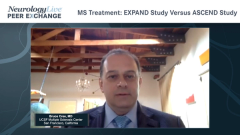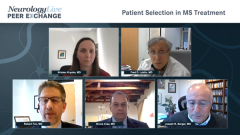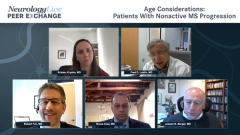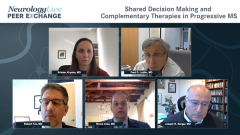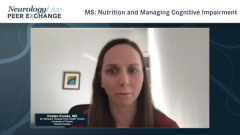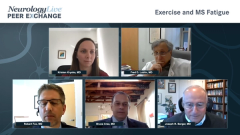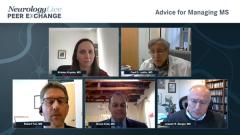
Nonactive MS: Treatment Therapies
A discussion of how experts treat nonactive multiple sclerosis in terms of trial results or symptom management and how decisions are based on patient age.
Episodes in this series

Bruce Cree, MD: Fred, what do you do with your patients who have nonactive progressive forms of multiple sclerosis [MS]? Do you offer these patients treatment based on the results of these trials, or do you just offer symptom management in that setting?
Fred D. Lublin, MD: Following up on what Dr Fox just said, it depends on their age. If it’s a young person who’s progressing, I will try one of these. In an older individual, I actually take the paradoxical view that I do MRIs on them and hope we see some activity, which is of course the opposite of what you want for the younger relapsing population. If I at least see some activity on the MRI, it makes me think I could maybe do something for these people.
When you look at all these studies, including some that failed, like the INFoRm study, if you have activity, you’re more likely to do better. The problem here, which Joe partially addressed, is that even in these studies, we’re treating inflammatory activity, so we have this paradox of how much of what we see in progressive disease is from the underlying inflammation. We know from the pathologist that there’s inflammation there all along the course of MS. We’re not sure how much is underlying inflammation vs neurodegeneration that we’re probably not touching.
These studies were designed where you couldn’t separate it enough to be sure. People have either shown that they were negative, like the INFoRm study—so even there because the amount of inflammation was sufficiently low. Even though when you dig into it, you can see a therapeutic effect on the inflammation, it didn’t affect the underlying progressive metric in that population.
In the ocrelizumab studies and the siponimod studies, there was enough turning off of inflammatory activity to say, “Maybe that’s what’s going on in here.” But you don’t know for sure because, with ocrelizumab, when you did the subset analysis, there wasn’t enough power to answer the question of whether people had activity or not.
I’ll raise one other issue: it really depends on how you want to look at activity. Do you want to look at what the activity was when people came into the study, going back a year or 2 years, which is what was done in the unfortunate subset analysis done in siponimod? Or do you want to look at the activity on study, which has been looked at in EXPAND? Nevertheless, that’s actually the population that’s telling you something that’s different between those who do and those who don’t.
Joseph R. Berger, MD: There’s another component to this: what the patient wants. It’s sometimes very hard to talk patients out of some form of treatment. They come in and have read about these drugs. They know they’re available and they say, “I would like you to treat me with something.” Very often, I feel compelled to do so. It’s hard to talk them out of being treated, even when you describe the risk-benefit analysis.
Robert Fox, MD: Joe, I’m not sure our job is to talk patients in or out of a therapy. Our job is to explain the potential benefits and the potential risks before they help choose. I have a lot of patients who make what I think is an incorrect decision, either starting a therapy or not starting a therapy, but it’s a decision that’s in their purview to make. Our job is to give them the data and the information. As long as we’ve given them the proper information, then I think it’s OK for them to say, “I hear you. That drug may not help me much and has some risk, but by jove, I’m going to jump in and try it,” and I say, “OK.”
Joseph R. Berger, MD: Yes. Well, that’s precisely what I was meaning.
Bruce Cree, MD: Shared decision-making is of course what we do in clinical practice today. That’s I have to say entirely different from when I was a first-year medical student and things were done in a very different style. But I think this is a much better way of practicing medicine today.
Thank you for watching NeurologyLive® Peer Exchange. If you enjoyed the content, please subscribe to our e-newsletters to receive upcoming Peer Exchanges and other great content right in your inbox.
Transcript Edited for Clarity
Newsletter
Keep your finger on the pulse of neurology—subscribe to NeurologyLive for expert interviews, new data, and breakthrough treatment updates.





